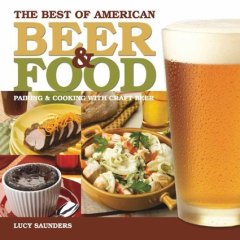 How do you decide when tweaking a recipe what makes a beer, a bowl of soup or a pot of mash potatoes better? Or, put another way, how many brewers is too many in a brewery?
How do you decide when tweaking a recipe what makes a beer, a bowl of soup or a pot of mash potatoes better? Or, put another way, how many brewers is too many in a brewery?
This seemed like a good question to ask the crew at Flying Dog Ales upon the release of Wild Dog Collaborator Doppelbock, a result of the brewery’s The Open Source Beer Project.
In case you missed it, here was the premise:
“Open source” is a term most commonly used in the software industry and refers to any program whose source code is made available for use or modification as users or other developers see fit. In this case, Flying Dog’s Open Source Beer Project will allow beer drinkers and homebrewers to create and recommend changes and modifications to the recipe.
The Open Source Beer Project will start as a Dopplebock but the style may evolve as participants offer ideas and tweak the recipe. “We are encouraging input on every part of the recipe, down to how what variety of hops we should use, how much we should use and when we should add them,” said Flying Dog Head Brewer, Matt Brophy.
“Many of our recipes are already collaborations from our brewers in house,” Brophy said while we sampled the beer. This beer turned into something more along those lines than what results with open source software. For one thing, there won’t be another version before next year. In contrast, WordPress makes this blog go, currently Version 2.2.1, and has been since Version 1.5.
So what if another brewer — figure it would be an amateur, also known as a homebrewer — grabbed the recipe posted by Flying Dog, made revisions and brought samples to the brewery? Might the changes end up in another version of the beer? (There won’t be another until next year, at the earliest.)
“If it is better, that’s what we’re all about,” Brophy said.
Were this a cartoon, you would have seen a light bulb go on above the head of Josh Mishell, creative manager. “People should send us that beer,” he said.
“We send beer to people,” said Neal Stewart, director of marketing. “Why can’t people send beer to us?”
Now that would be a gimmick.
So, to one of the questions in the headline, was this a gimmick?
Stewart explained that his goal is to make sure each Wild Dog release has a hook. “This series is designed to build some credibility with the beer community and the high-end liquor stores,” he said. “And we truly did want to engage homebrewers.”
It seems curious to listen to Stewart talk about striving for credibility. After all, president/”lead dog” Eric Warner is Weihenstephan-trained and has written books about brewing.
“We have this stigma of being gimmicky,” Stewart, pointing to the Ralph Steadman labels on Flying Dog beers and the brewery’s association with the late Hunter Thompson. “Some consumers think we had to do this to hide bad beer.”
It would be hard to be more transparent than Flying Dog has been with Collaborator Doppelbock. “We didn’t hold anything back,” Brophy said.
So to another question at the top. Is the beer better?
We don’t really have Version 0.9 or v1.1 to taste it against. Some will like the fact that it is spiced with American hops, one of the tweaks that came from website suggestions. Some won’t.
Maybe you can’t taste the intangibles, but Brophy knows they are there. “It was fun, a fun project,” he said. “It created excitement. Not just externally but internally.”
Oh, yeah, the third question: Is it free?
The recipe is. The beer isn’t. But then you knew that.

 OK, you don’t have to crank it up. You can put a little Mozart on the stereo, haul out your collection of Oktoberfest drinking songs, or grab a guitar with one hand and a beer with another.
OK, you don’t have to crank it up. You can put a little Mozart on the stereo, haul out your collection of Oktoberfest drinking songs, or grab a guitar with one hand and a beer with another. Can beer be a luxury and a blue collar product?
Can beer be a luxury and a blue collar product?